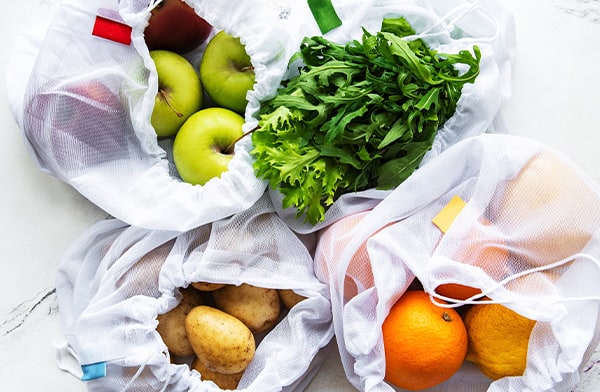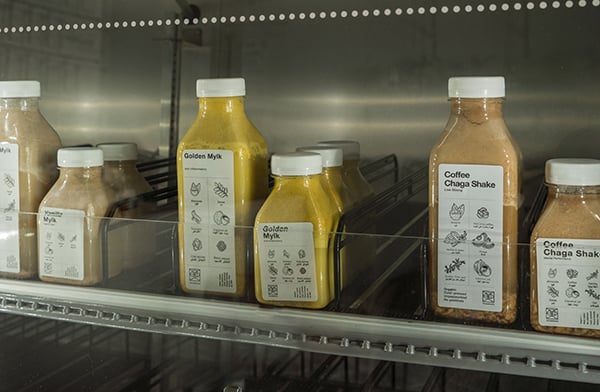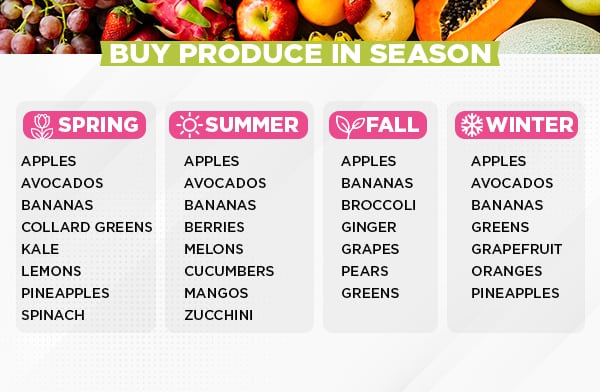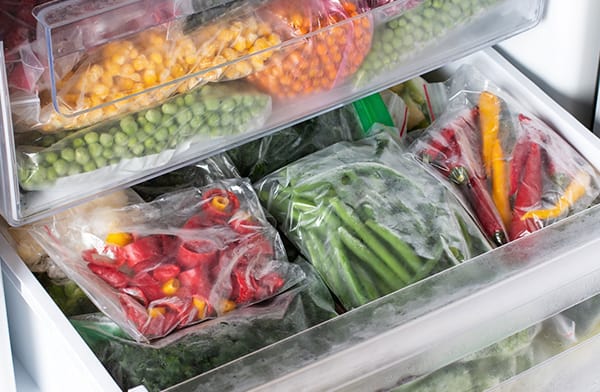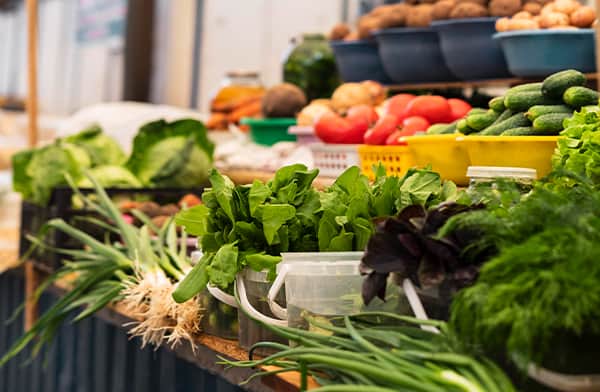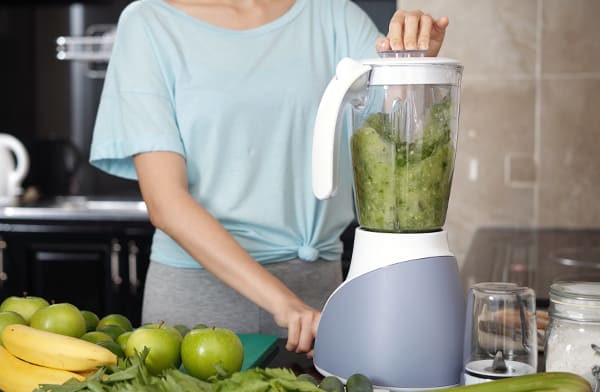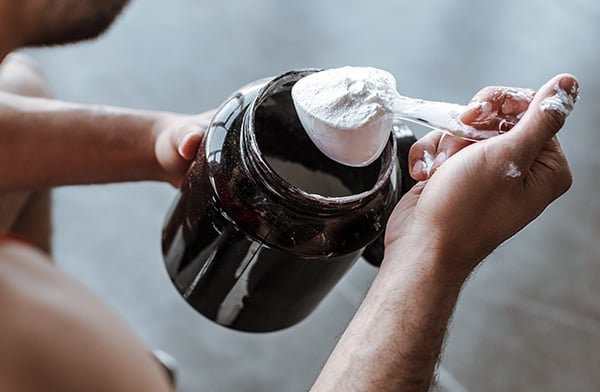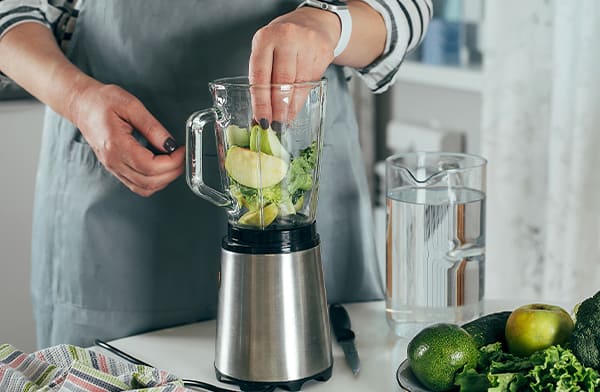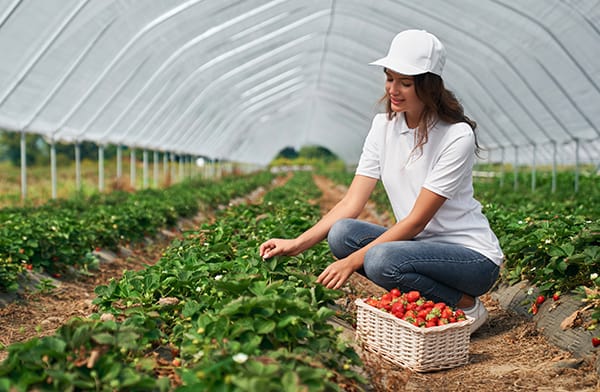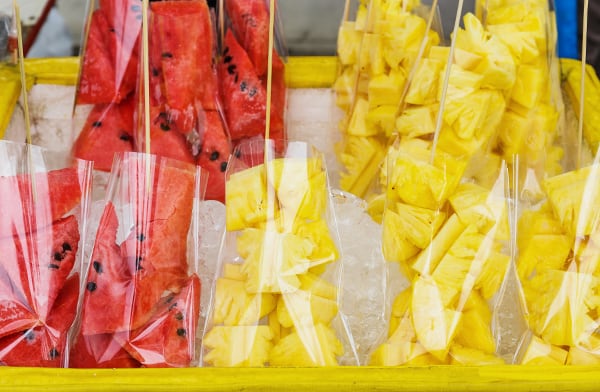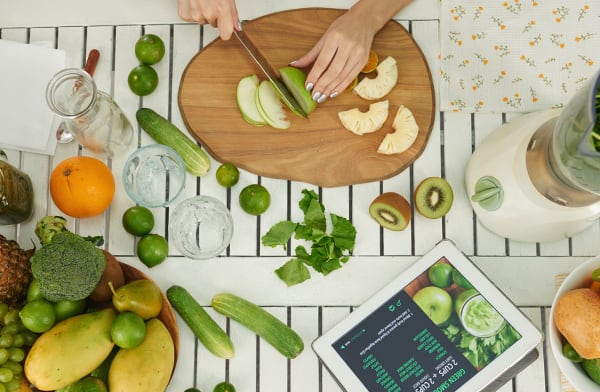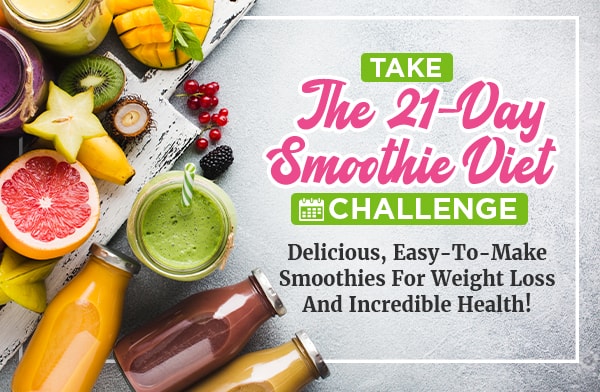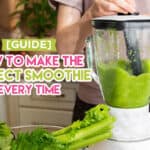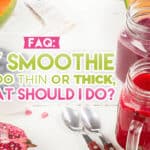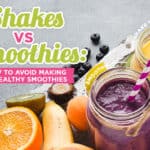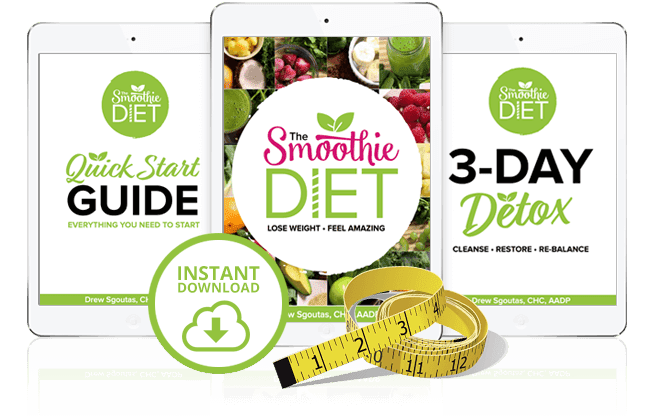12 Tips to Help You Make Healthy Smoothies on a Budget
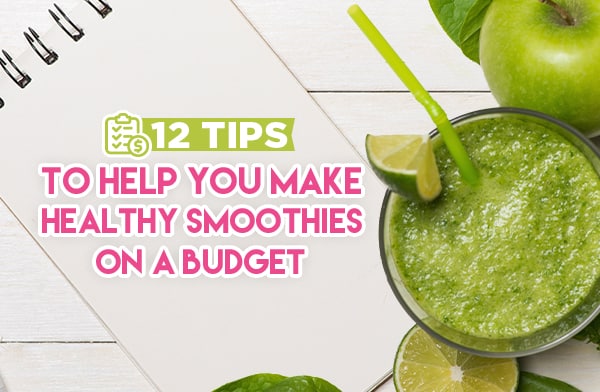
If you’ve ever looked at the prices of your local smoothie or juice bar, you’ve probably wondered what all these smoothie addicts are doing to have so much extra disposable income. How can anyone afford a daily smoothie habit that costs them $5, $8, or more every day?
Maybe you’ve thought about making them at home. Maybe you’ve even tried and found that the expense is just as high. Smoothies can be cheap if you’re smart about it, but if you’re just buying produce as you want it and blending it up, you’re going to waste money. Some produce goes bad quickly. Some isn’t usable. Maybe you’ve even had enough of bananas and want to try something else, letting half a bunch go bad.
If you’re looking to make the most out of your smoothies without breaking the bank, I’ve got some great tips for you.
1: Buy Ingredients in Bulk
The number one tip for any food prep cost-savings measure always has been, and always will be, buying ingredients in bulk wherever possible. Bulk purchases save you the most money when an item is on sale, when there are bulk discounts, and when you have coupons that apply, especially if you can find percentage coupons.
It can be more difficult with smoothies, though. Produce like fruits and vegetables can go bad quickly, so you need to either spend hours making smoothies when you buy the ingredients, or you need to somehow preserve the ingredients you bought in bulk.
The usual go-to preservation method is freezing. You can flash-freeze almost any fruit by spreading it out on a baking sheet and leaving it in the freezer for an hour or so, and then packaging it up in an airtight container to prevent freezer burn.
2: Make and Freeze Smoothies in Batches
While we all want the freshest, tastiest smoothies, sometimes freshness has to be put aside in favor of lower costs. That’s why I recommend making smoothies in batches. Instead of trying to use one banana at a time or a handful of leafy greens, and letting the rest spoil if you don’t get to them in time, just make a week’s worth of smoothies all at once.
Smoothies don’t preserve very well, though. You can seal them in an airtight container in the fridge for a day, but that doesn’t help you if you’re making seven days of smoothies. In that case, the best option is freezing them.
Luckily, I’ve gone over tips for saving smoothies for later already. You can read my detailed guide here, and don’t forget to check out The Smoothie Diet as well for additional tips.
3: Buy Produce In Season
Fruits and vegetables have growing seasons, and those seasons vary depending on where in the world you are. The more in-season your produce is, the cheaper it will be to purchase.
- Spring: Apples, Avocados, Bananas, Collard Greens, Kale, Lemons, Pineapples, Spinach.
- Summer: Apples, Avocados, Bananas, Berries, Melons, Cucumbers, Mangos, Zucchini.
- Fall: Apples, Bananas, Broccoli, Ginger, Grapes, Pears, Greens.
- Winter: Apples, Avocados, Bananas, Greens, Grapefruit, Oranges, Pineapples.
This is a vague summary. You can find a more robust list and adjust it for your geographic location on sites like The Seasonal Food Guide. Bear in mind that there will be a dramatic difference if you live in an area where certain kinds of produce are grown. What’s readily available will vary a lot between Florida, New York, Minnesota, and Arizona, after all. General guides are fine, but if you can find a local produce guide, even better.
4: Buy Frozen Instead of Off-Season
Off-season fresh produce is often quite a bit more expensive than the same produce a few months later. That’s because; to get the produce to your market; it needs to be grown in enclosed conditions (like a hydroponics facility or a year-round greenhouse) and shipped potentially across the country or even across an ocean to reach you. All of the costs of those features add up and are factored into the price of the produce.
Frozen produce, meanwhile, can be produced with in-season fruits and vegetables, frozen, and stored. The price of frozen produce tends to remain largely the same throughout the year, so sometimes it will be a better deal.
Normally I’m not one to advocate for frozen produce – sometimes the methods used to prepare and freeze it aren’t great for the nutritional value of the food – but it’s better than buying bland, expensive off-season fruits. Of course, the best option is to have frozen it yourself ahead of time.
5: Consider Checking Farmer’s Markets
Most areas have local farmer’s markets where farmers from the region bring in their produce to sell. You’ll find one of two things here:
- Produce that is much higher quality than what you see at the grocery store, for the same price, or
- Produce that is the same quality as what you find at the store, for a lower price.
Since the grocery store isn’t there to take a cut or using low-quality suppliers, you have access to a greater range of produce at better price and quality levels. You may also be able to find more exotic or local produce you wouldn’t be able to find at a mainstream grocer. You can broaden your horizons, save money, and end up with higher-quality produce all at once!
6: Invest in a Good Blender
A great blender is a great investment. Yes, it’s more expensive up-front. That’s because it will be higher quality, last longer, and be better at blending tough ingredients. This is especially important if you’re making smoothies every day and even more so if you’re using frozen ingredients. You need a blender that can power through frozen fruit and still make a smooth beverage, after all.
I have some recommendations for good blenders in The Smoothie Diet, so check it out!
7: Ditch the Powders and Supplements
Some people recommend loading up smoothies with superfood powders, protein powders, pre-workouts, and other supplements. I don’t. I believe these powders are often ineffective at what they do. Sure, you can get some protein from a protein powder, but you can get better protein by eating a high-protein meal instead. There are also plenty of good sources of plant protein you can add to a smoothie instead.
The worst part, though, is that these powders tend to be very expensive for what they are. Protein powder is cheap to manufacture, and it’s marked up for sale because of all of the branding and marketing surrounding it. There are hundreds of these products on the market, and they’re all basically the same. Just skip them and use healthy, whole-food ingredients instead.
8: Consider Costs Long-Term
Rather than a direct money-saving tip, this one is more about changing your mindset. I want you to think about a few situations.
First of all, think about the expenses you save when you switch to smoothies. What have you been eating for breakfast? A Starbucks drink? A bowl of cereal or two? Breakfast at a diner? These are almost universally as expensive, if not more expensive, than the components of a smoothie. So, just by switching to smoothies, you’re already saving some money.
Another consideration is cost spread out over time. You can see this with the cost of a good blender, as a good example. A good blender might cost $200, and a cheap one might cost $50. But, if you have to replace your cheap blender every six months, you’re spending $100 a year on it, whereas a good blender can last you ten years or more with proper maintenance.
The sticker shock of a grocery cart full of produce can be high, but think about that cost spread out across the number of days, weeks, or months those ingredients will last. When you put it into that context, $1 a day really isn’t all that much, is it?
9: If Possible, Grow Your Own
Sometimes the best way to save money is by investing time. If you have land or even just space in a window, you can grow some of your own produce!
Sure, some ingredients aren’t feasible to grow on your own. You can grow oranges, but a tree can take years to get established before you see any fruit. You can’t really grow bananas effectively in most parts of the US. On the other hand, you can grow some berry bushes quite easily. Some fruits and a lot of vegetables can be grown in pots or planters on a windowsill or a deck as well. You’d be surprised at the kinds of gardens people can grow, even on an apartment balcony!
This only works, of course, if you have the time to invest in caring for plants. It also only works for certain seasonal produce, and might end up saving you just a few dollars. On the other hand, gardening is a pretty fun hobby, so if you take to it, that’s wonderful.
10: Avoid Paying Extra for Convenience
One of the biggest cost traps of modern supermarkets is paying for convenience. What do I mean?
Think about things like pre-peeled and sliced apples or cored and chopped pineapple. You can find ready-to-eat or ready-to-use produce at the grocery store, but it’s going to be more expensive for smaller portions than what you would get if you bought the whole fruit or vegetable and prepared it yourself.
Don’t get me wrong; these convenience options are good for some people. People who have mobility issues might not be able to chop a pineapple but can enjoy a tub of diced fruit. People who need a snack on the go don’t want to try to peel an apple at work. That’s fine! I’m talking about instances where you have the time and ability to prepare your ingredients. There’s no reason to pay for the convenience of saving yourself a few minutes.
11: Use Simpler Smoothie Recipes
One of the biggest mistakes I see people make when they’re getting started with smoothies is loading them up with absolutely everything that sounds good. If you check out The Smoothie Diet, you might notice that most of the recipes in the book are relatively simple. They have a base ingredient, a couple of primary flavor ingredients, and one or two ingredients for substance and nutrition. It doesn’t take much to make a delicious smoothie!
So, if you limit yourself to a 5-ingredient smoothie or less, you’re going to save money simply by limiting how much you need to buy.
As an added bonus, this lets you have more flexibility with different flavor combinations. Instead of making every smoothie a mixture of every ingredient you like – and ending up with a homogenous smoothie experience you’ll get bored of quickly – you can vary up your recipes from day to day and week to week.
12: Shop Sales for Shelf-Stable Items
A lot of smoothie additions don’t need to be consumed or prepared right away. Things like oats, flaxseed, beans, and nuts can sit on a shelf for months or years and still be just as good as they were when you bought them.
What that means is that you have the luxury of waiting for good sales, promotions, and coupons to buy those ingredients and buy them in bulk. That way, you get enough to last you for months, for a lower price than if you had bought them just when you wanted them. You can save a lot of money over the course of a year by shopping for sales.
Switching to a smoothie diet isn’t necessarily expensive. You have a lot of different ways to minimize costs, and you’ll never need to buy something that’s too expensive. Smoothies have so much variation you can always customize them to what’s available and still have a great breakfast or lunch. You don’t need to make extreme couponing a full-time job to save money, just shop smart, make smoothies in batches, and freeze leftover ingredients.
What about you? Do you have any healthy smoothie budgeting tips? What are they? I’d love to hear them, so be sure to leave a comment down below with your answers!

